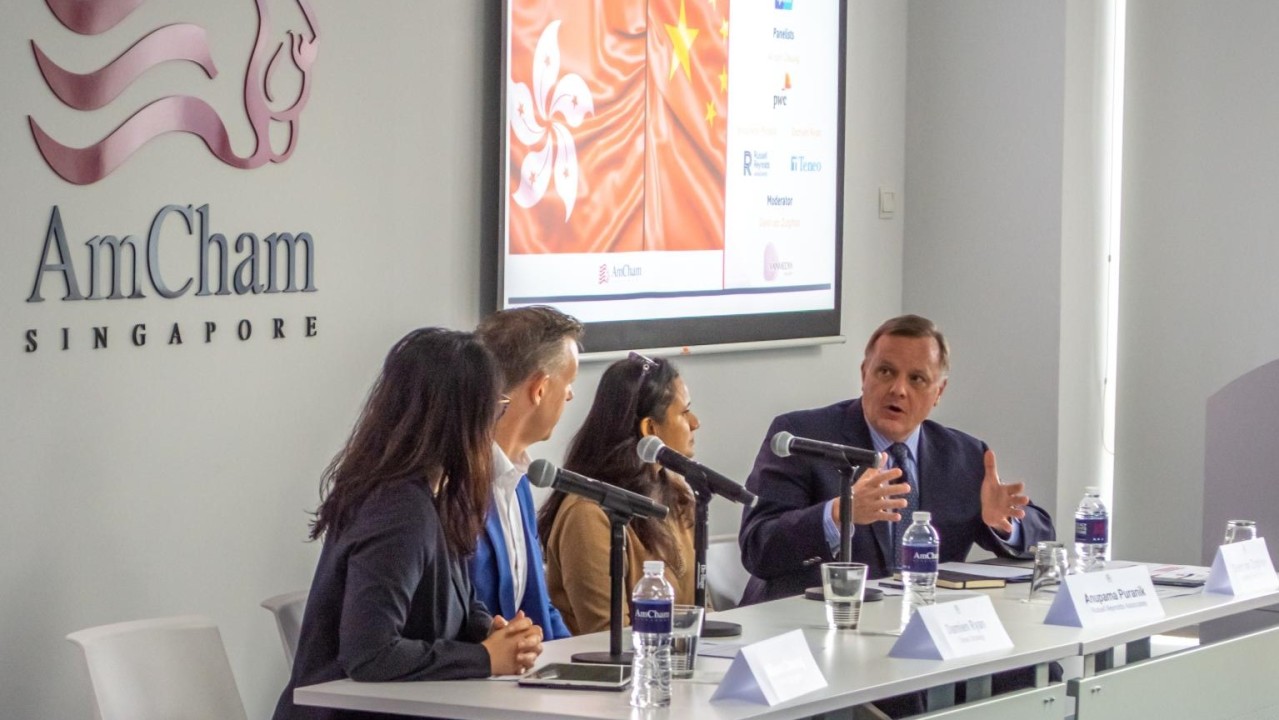Tips to rock the stage: be remembered next time you’re a panelist.

Article by: Glenn van Zutphen, Founder & CEO of VanMedia Group Pte Ltd.
I was pleasantly surprised yesterday while moderating a panel at AmChamSingapore in which all of the participants were excellent: they were well-prepared with insightful, pertinent comments, represented a diversity of opinion, gender, and expertise.
With the sheer number of panel discussions we all have to sit through every year at conferences and meetings, the level of pain and suffering can be too much to bear for the audience: too many “manels” (all-male panels), too many people on the panel (I’ve seen five or more), too little time given to the discussion (15-20 minutes is common at conferences), and panelists who poorly convey the information that’s needed by the audience.
In my experience, there are five types of panelists. Thankfully, they don’t all show up to every panel discussion, but they apply to both men and women (though men are usually the worst offenders):
• The Loud Mouth. Answers first and seems to never shut up (unless the moderator is very adept). While often knowledgeable, they don’t know when to stop. The audience gets tired of listening to them drone on and dominate the discussion.
• The Mouse. We never hear from this person. Sitting patiently, waiting for an invitation to talk. While they may have great insight and knowledge, they’re just not sure when or how to speak up.
• The Professor. A knowledge expert who insists on showing the audience that they know it all, even though it may not be useful or memorable to the audience.
• The Bully. Takes apparent joy in being needlessly confrontational and contrarian. They grandstand and take a reality TV talk show mentality toward the discussion.
• The Pro. Knows when to jump in and what to say – in a clear, concise and captivating way. This person often uses memorable anecdotes and appropriate data and/or studies. Audiences like them.
Here’s how I coach executives to be effective conference panelists and become The Pro. Panel prep starts with strategizing and answering obvious questions long before taking a seat in front of the audience:
• What is the topic and the current trends or news pertaining to it?
• Who is the intended audience?
• What does the audience want and need to know from you on this topic?
• What is your unique point of view?
Additionally, panelists should take the time to investigate their co-panelists before the conference. At the very least, Google them and look at their LinkedIn profile; read their posts and look at their online interviews. Determine what their position on the topic might be so that you can say something different and memorable.
With this knowledge in hand:
• Develop one or two concise key messages that can be easily delivered by you and that will resonate with the audience.
• Practice the messages and “breaking into” the discussion with a colleague or coach before going on stage.
Since panel discussion time is usually limited, you may have only one or two chances to speak and make an impression. Make sure you do everything possible to deliver quality comments that are appropriate and memorable to the audience.
“Tips to Rock the Stage“ is part of the VanMedia Group Pte Ltd CEO Media Masterclass Series.